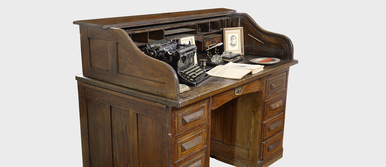The collection of the Rusanov House Museum includes a postcard featuring the city of Oryol at the end of the 19th century.
In the early 20th century, the area on the left bank of the Oka River, from the confluence of two rivers almost to the railway bridge, was one of the busiest. There were wooden and stone houses with gardens, churches towered above them, and all this was reflected in the river. In the 19th century, postcards often featured different views of this long and lively street — the pictures are still included into books on the history of Oryol. Unfortunately, almost none of the cityscapes that were put on postcards have survived to this day.
A hundred years ago, there were numerous houses, fences, and trees at the confluence of the Oka and the Orlik rivers. It was also the site of the bazaar with grain, hemp, fruit, honey, and pickles sold directly from the carts. There were shops, workshops, and private offices in larger buildings. It is possible to read the signboards in one of the old postcards: “Warsaw Dye House” and “Printing House” are clearly visible on the large stone house with stucco moldings around the windows. Next to it is a house with arched windows and a beautiful canopy porch on graceful pillars. However, there is no way to read the signboards. The whole space used to be filled with barns and storehouses, and on Sundays and market days there was a big fair held. This bustling place was called the dairy market.
The dairy market emerged spontaneously: the merchants who owned merchant ships and barns on the banks of the Oka River found it convenient to sell goods right on the spot. The authorities never liked this “bazaar”. So, in 1778, they decided it spoiled the view of the city, and ordered the construction of a stone Gostiny Dvor building, while the place that was occupied by shops was turned into the city square. The rows of trading stalls were built, but there were still many shops left on the banks of the Oka River.
In 1808, the city Duma returned to this issue and
decided to arrange one more place for trading by transferring street trading to
Ilyinskaya Square. But the merchant guild was quite strong, and therefore for
many decades the market on the left bank of the Oka River continued to flourish,
bringing considerable profit to the owners of shops, barns and cargo barges.


